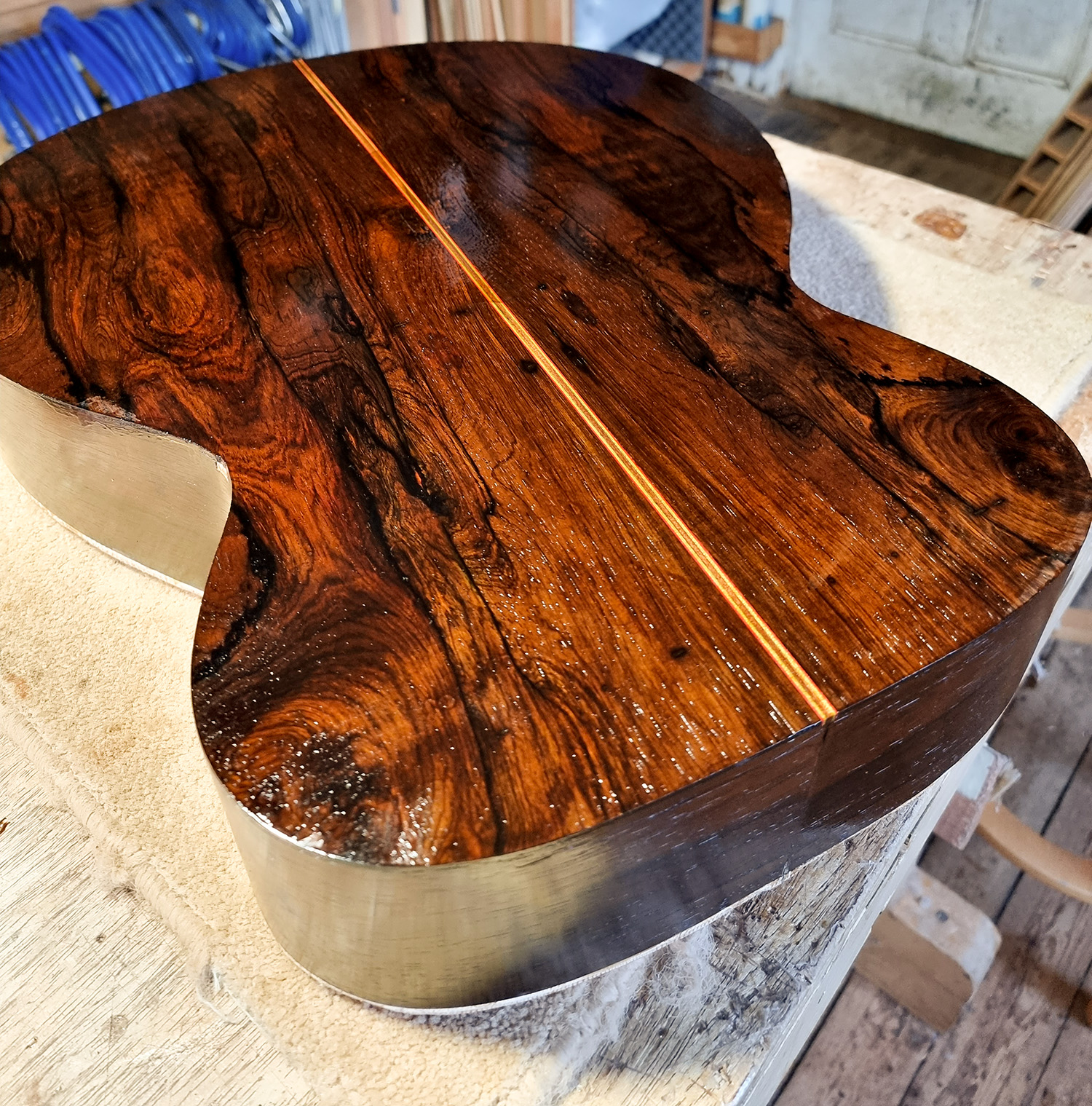Development New World guitar for sale
As well as the Douglas Fir/Brazilian rosewood guitar below, I am also selling a development New World guitar.
It has back and sides of Katalox, also known as Mexican Ebony. I came across it when visiting Keystone Guitar Tonewoods in Essex a dozen or so years ago. I was intrigued by its ringing tap tone and close grained dark appearance, so bought a couple of sets. They sat on a shelf in my warm shop, air-drying and half forgotten for over a decade, until last year when I took them down, tapped them again, and couldn’t resist building one into a guitar.
The soundboard is close grained German spruce, with my inlaid ebony logo on the shoulder.
It has my preferred Highlander pickup fitted.
I strung the New World guitar in November 2023 and was captivated by the rich, smooth and even sound. The bass is strong and smooth, the treble strong and clear without a hint of edginess. I love it; this is a guitar for life.
I shall build more Katalox guitars, though it can be hard to find. I found only two sets on offer in Europe and bought them both. So I now have another three sets.
Katalox has another advantage: it isn’t listed on any CITES appendix so exporting is easier.
Specification New World K
| Soundboard: | German spruce |
| Back and sides: | Katalox (Mexican ebony) |
| Neck | Wengé |
| Fingerboard: | Ebony |
| Bridge: | Ebony with two piece bone saddle |
| Binding: | Santos rosewood with red/gold/green purfling |
| Trim: | Birdsfoot edging with red and black purfling |
| Body Width: | 402mm (15.8″) |
| Body Length: | 495mm (19.5”) |
| Max body depth: | 101mm (4.0”) |
| F/b width at nut: | 45mm (1.75″) |
| Scale: | 643mm (25.3”) |
| Tuners: | Gold Gotohs |
| Pickup | Highlander |
Price
The New World K is priced as a New World African Blackwood at £11,250.00. While unmarked, it has been with me for seven months so the cost is £10,500.00 including Hiscox Artist Line case and Highlander pickup.
US price is $15,000 including shipping and insurance. Katalox is not CITES listed so shipping is straightforward. As with the Douglas Fir MS, this is an opportunity to buy from me without the usual wait.

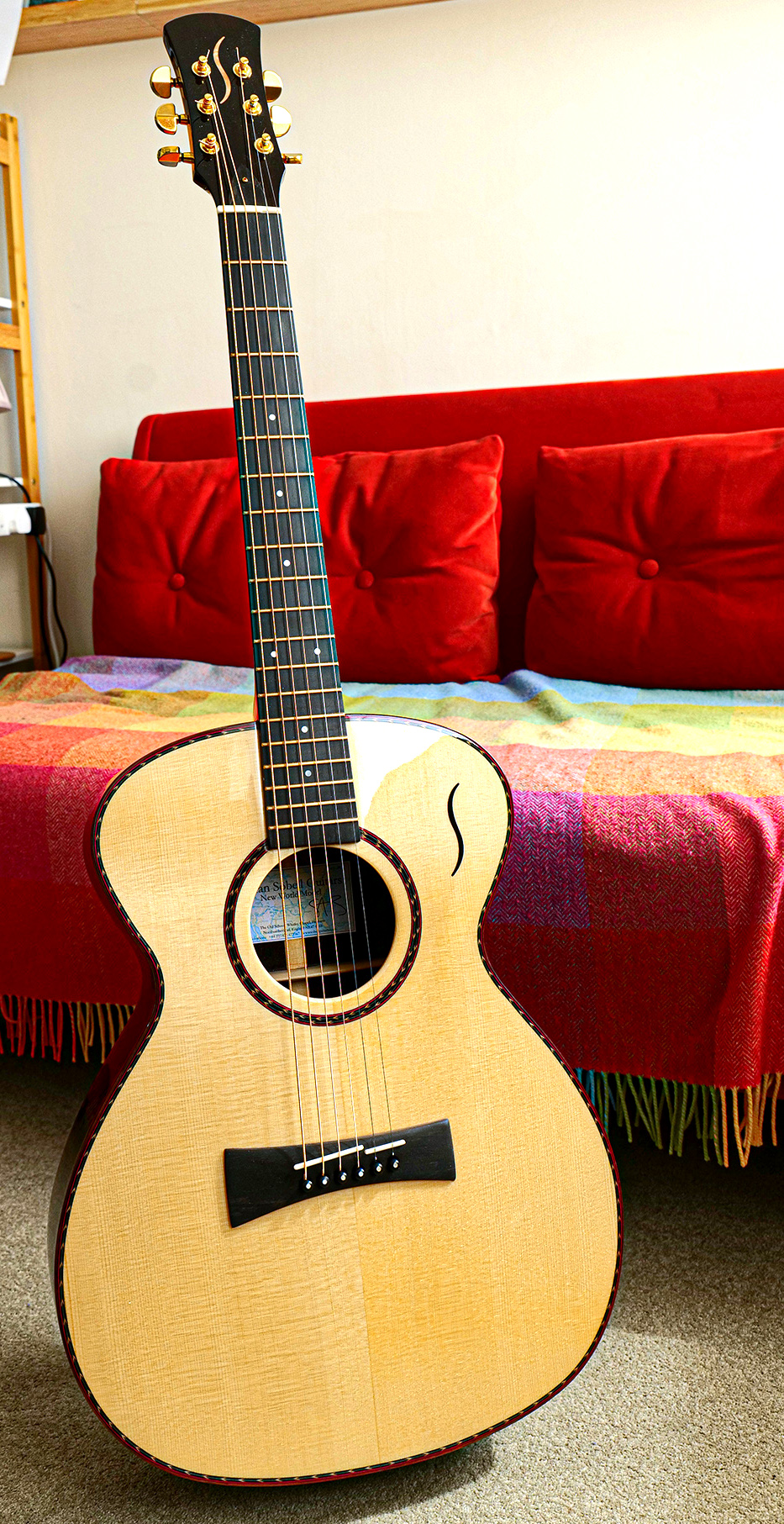 German spruce soundboard
German spruce soundboard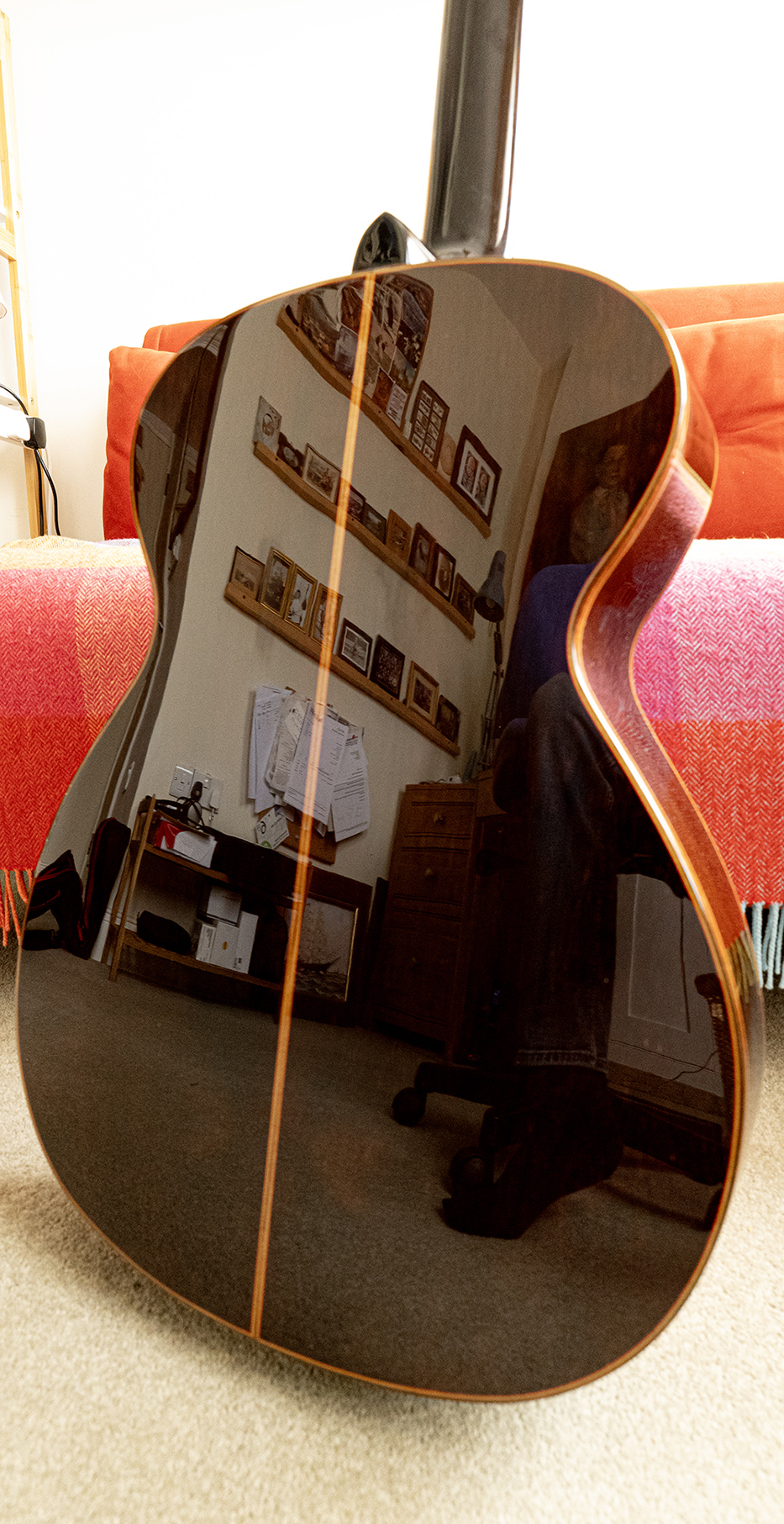 Katalox back and sides
Katalox back and sides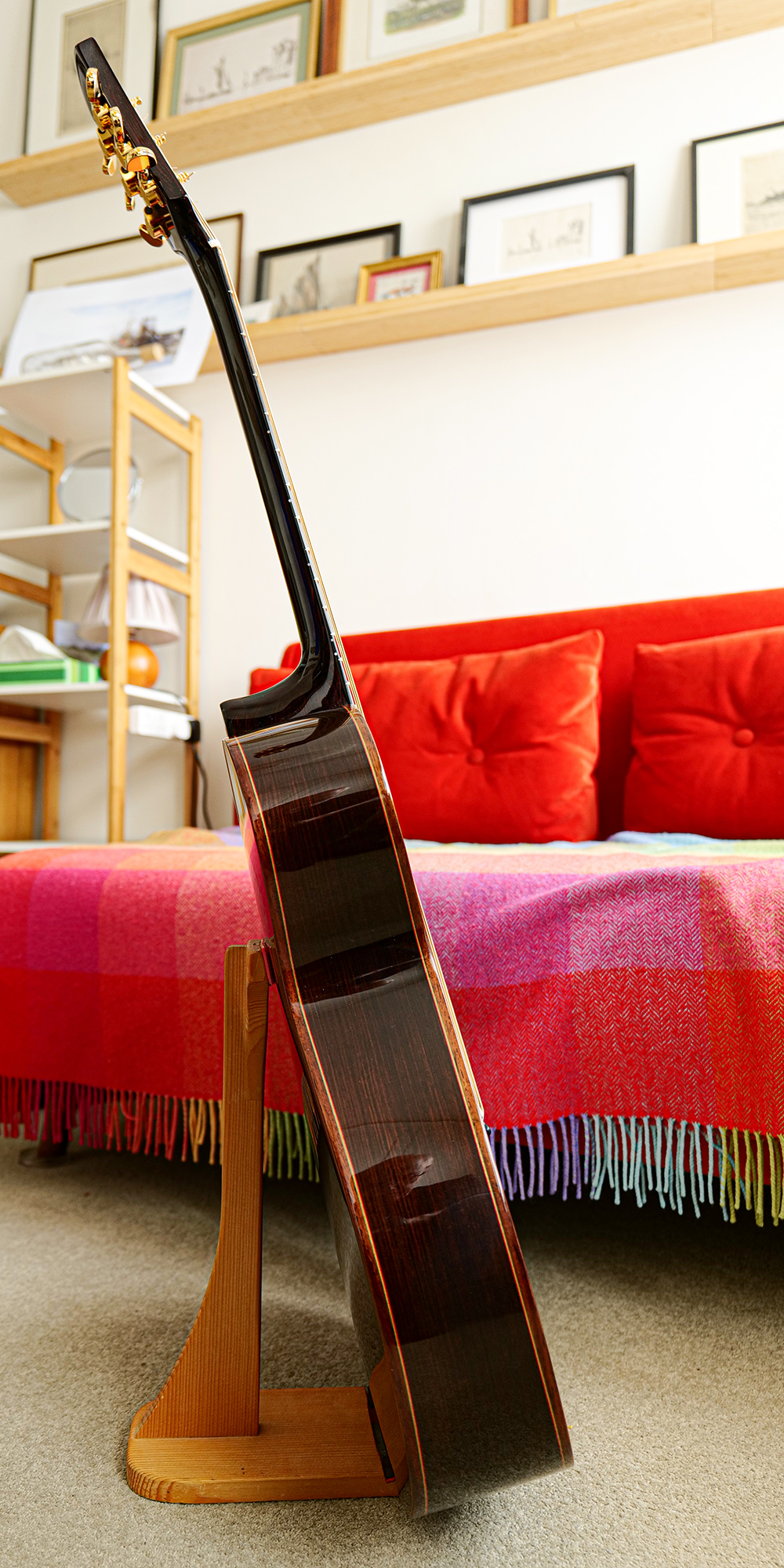
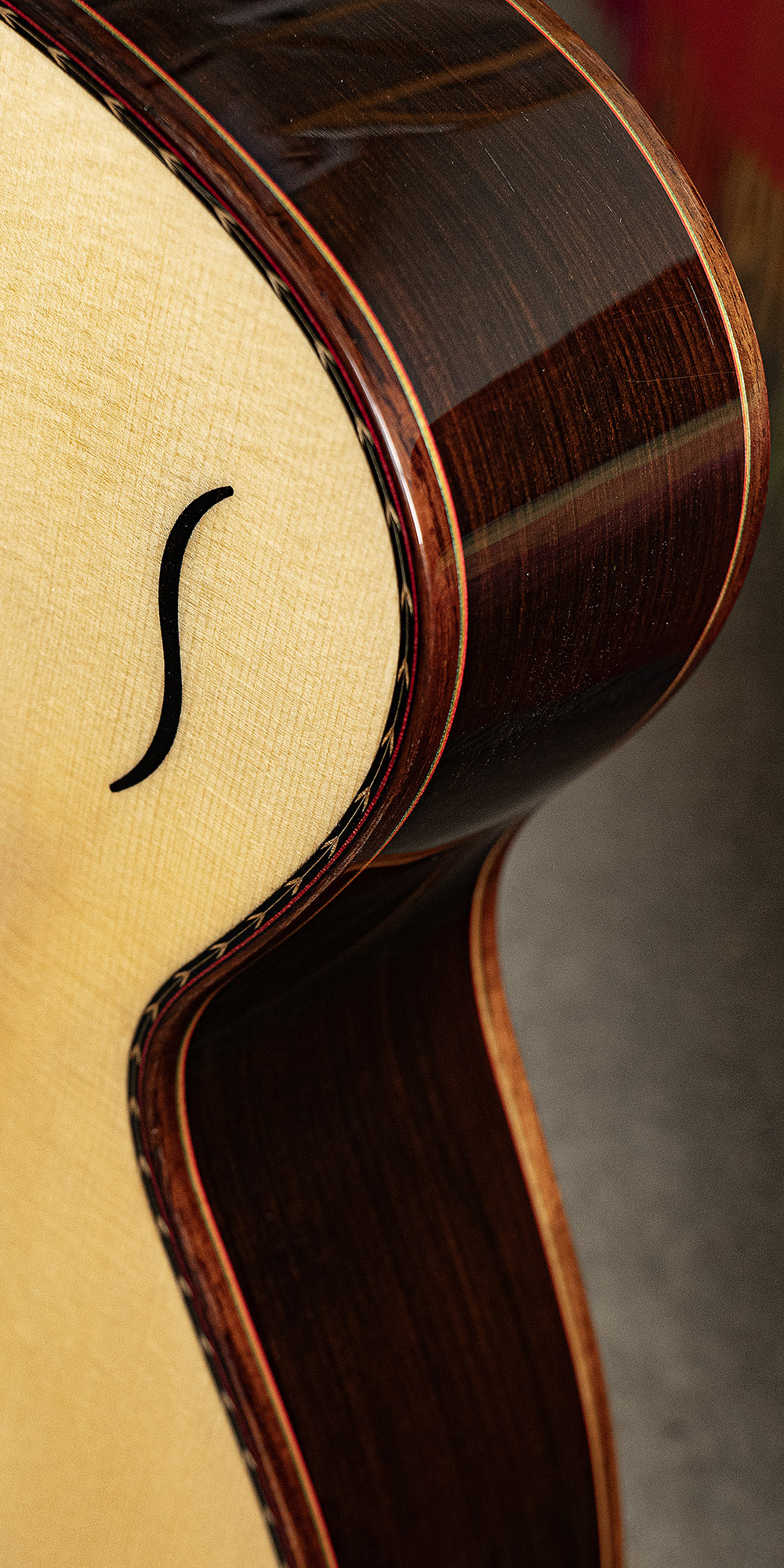
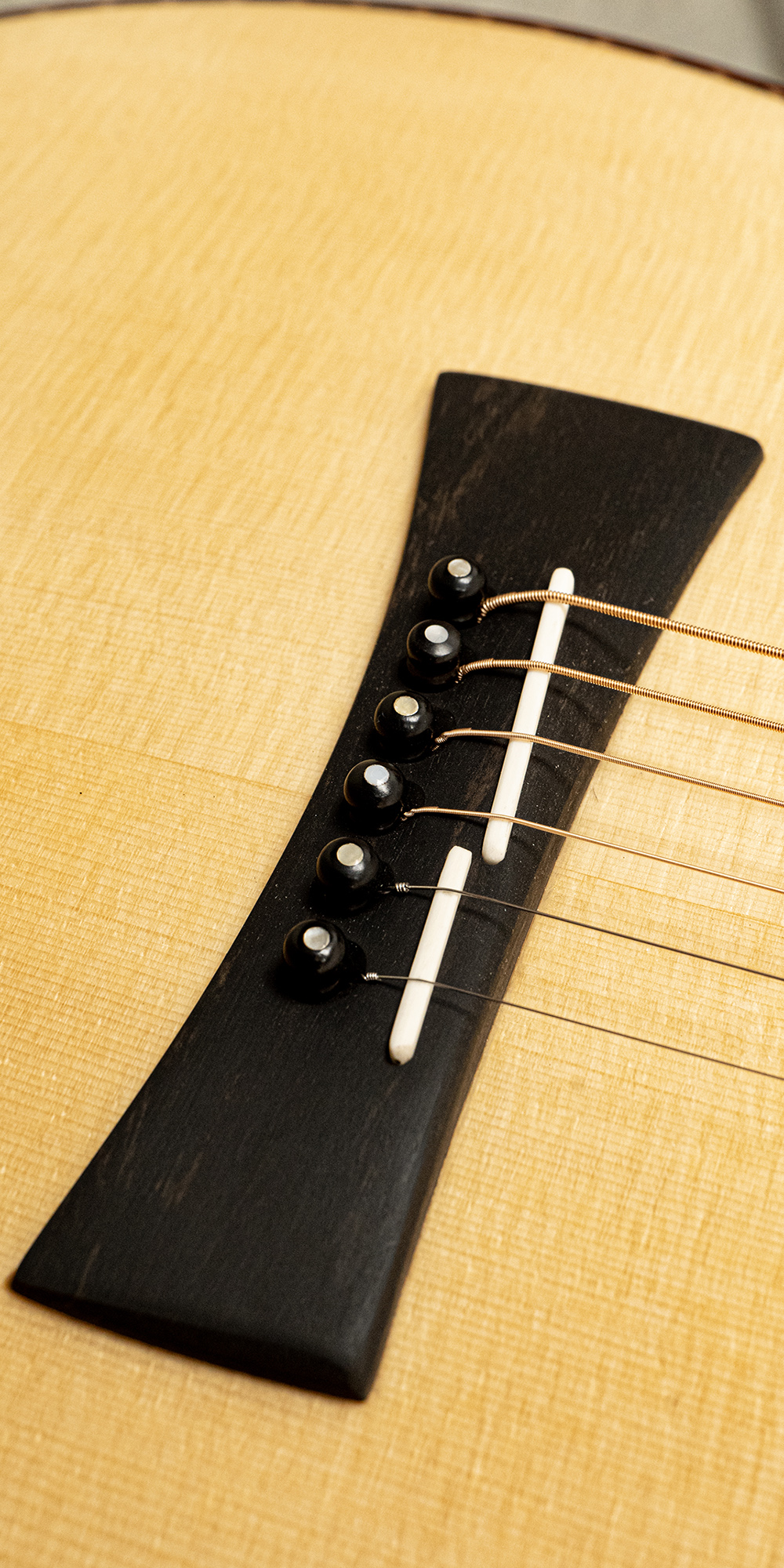
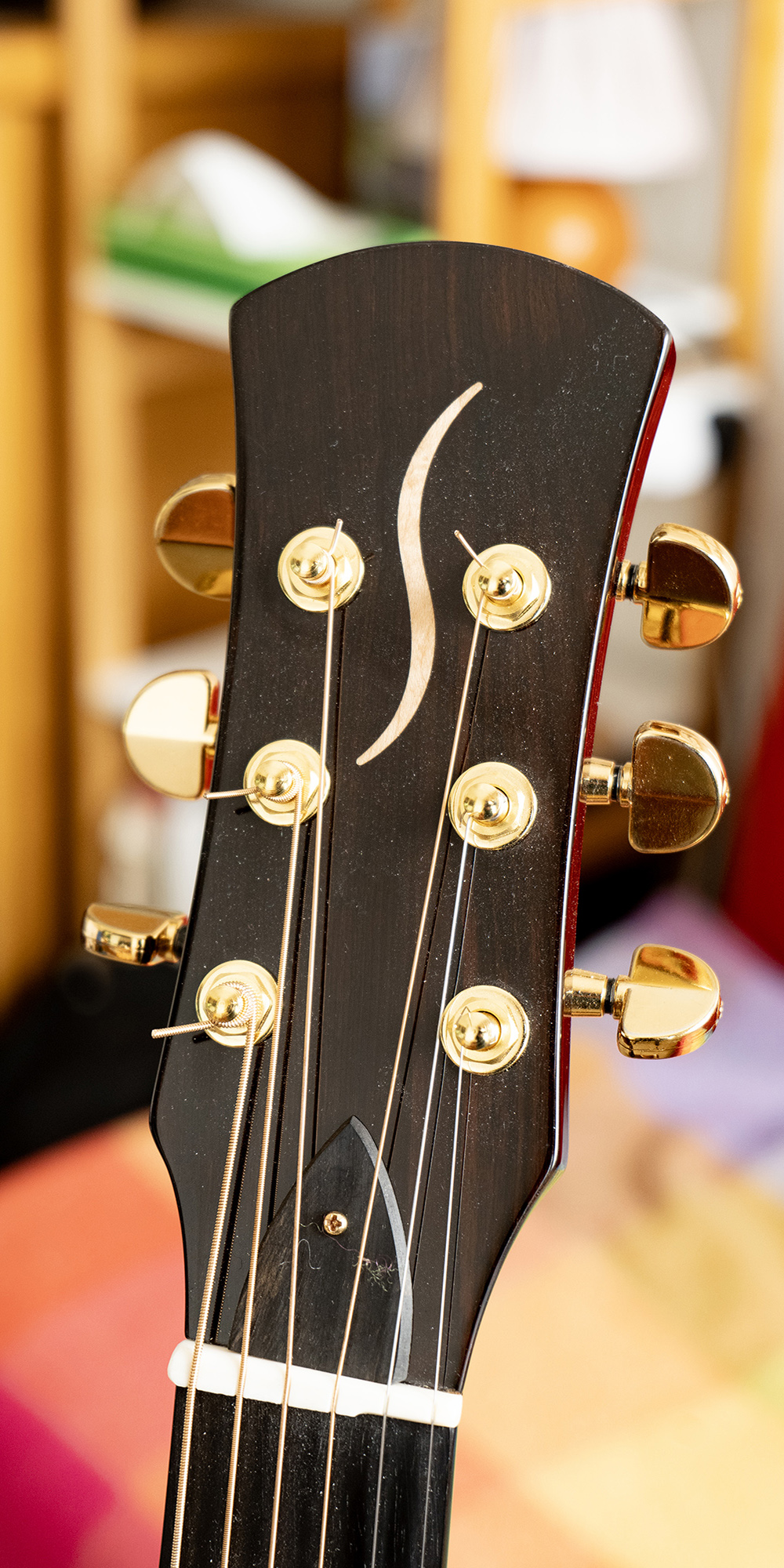
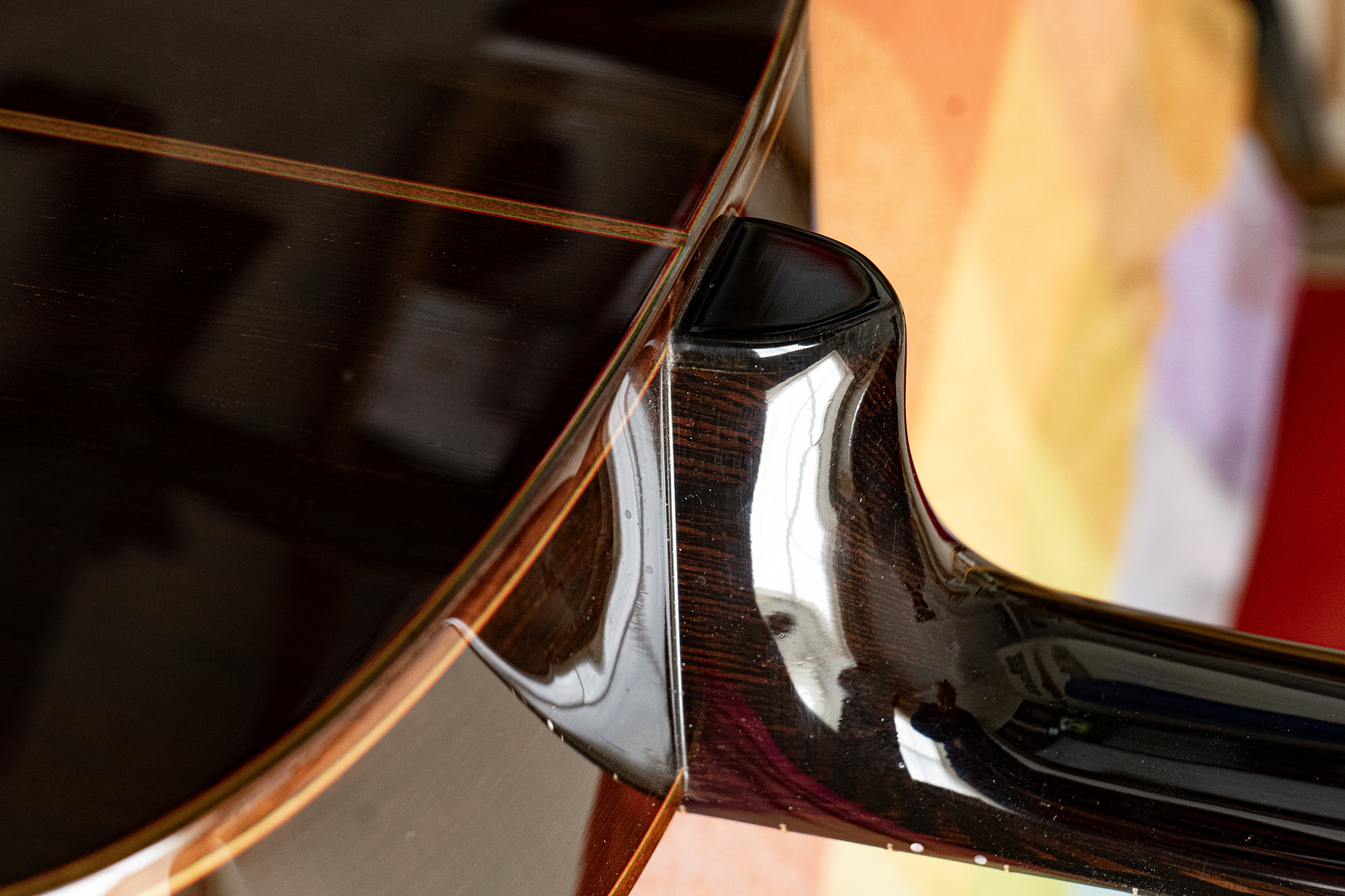
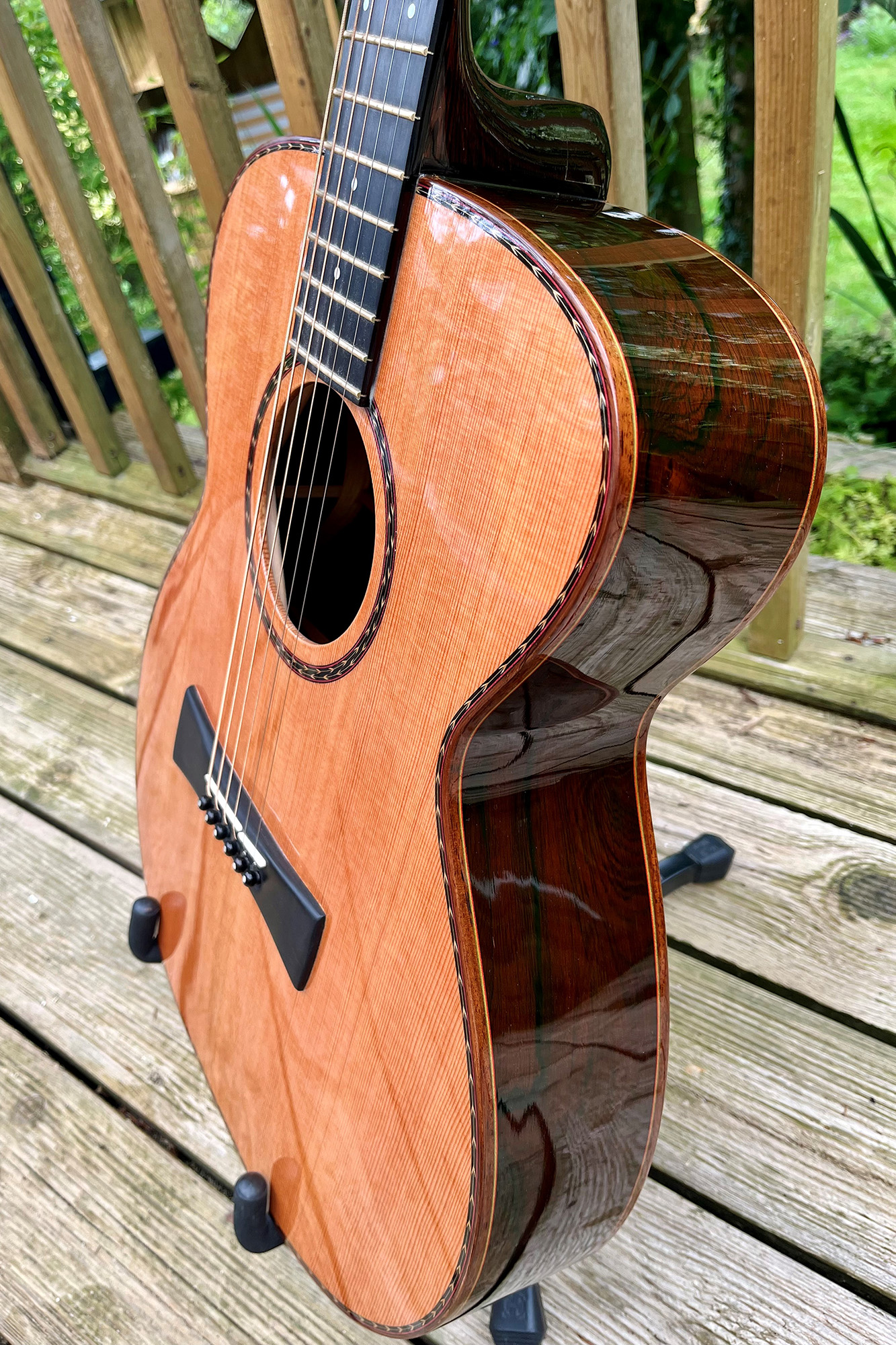
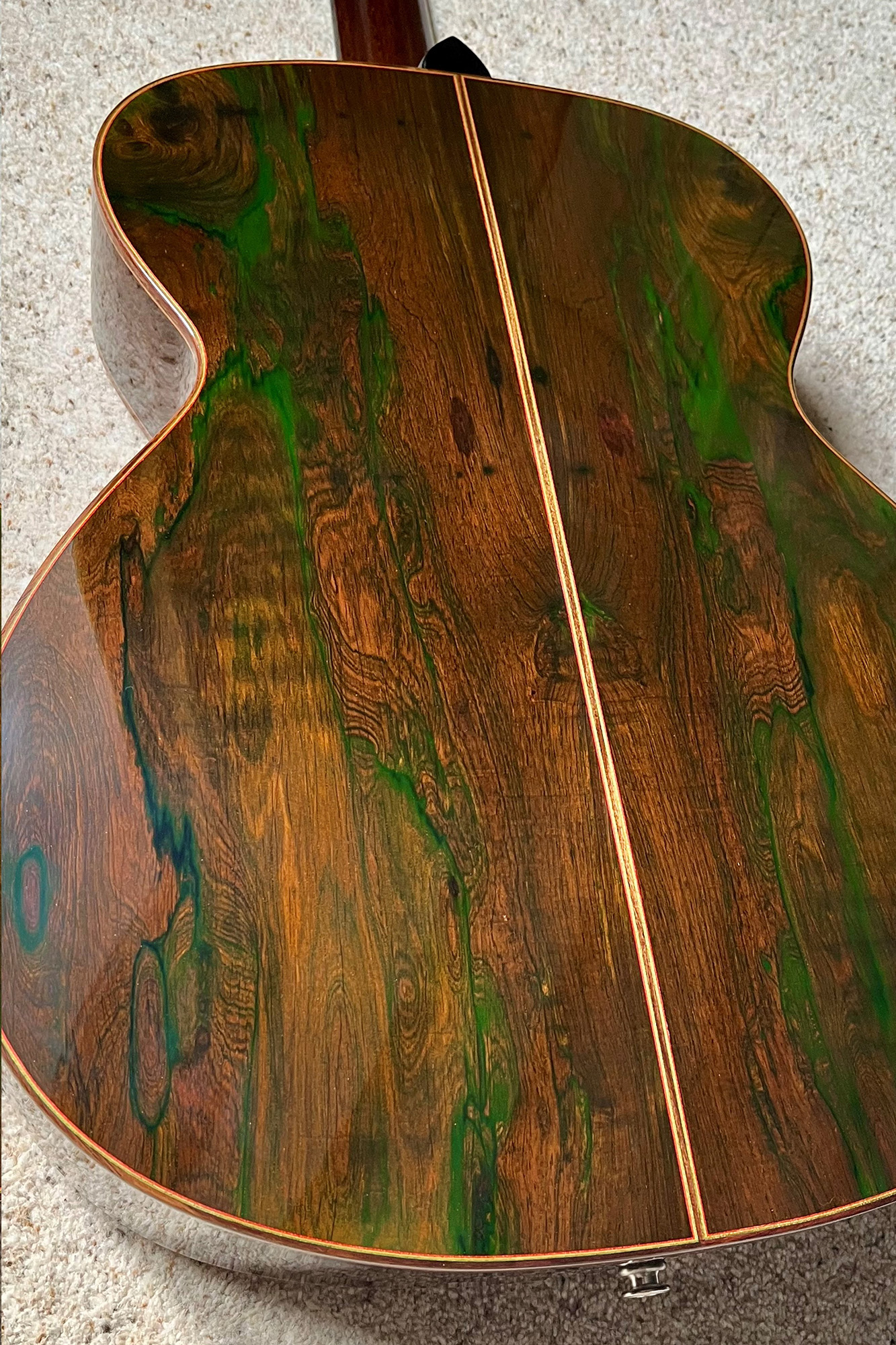
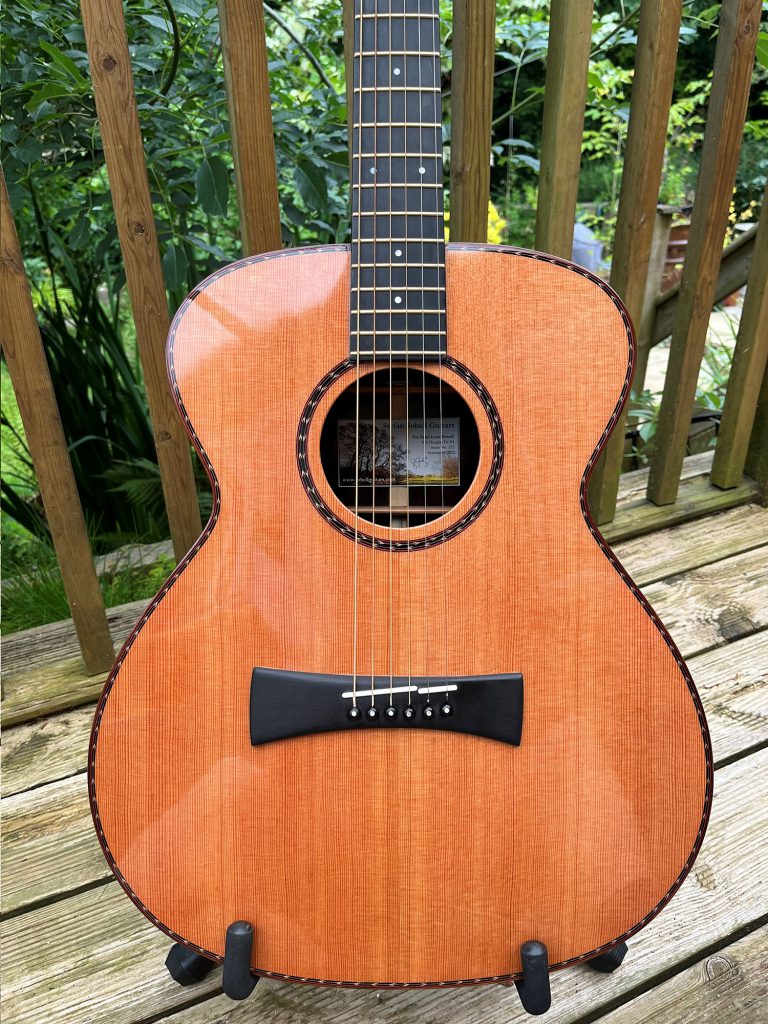
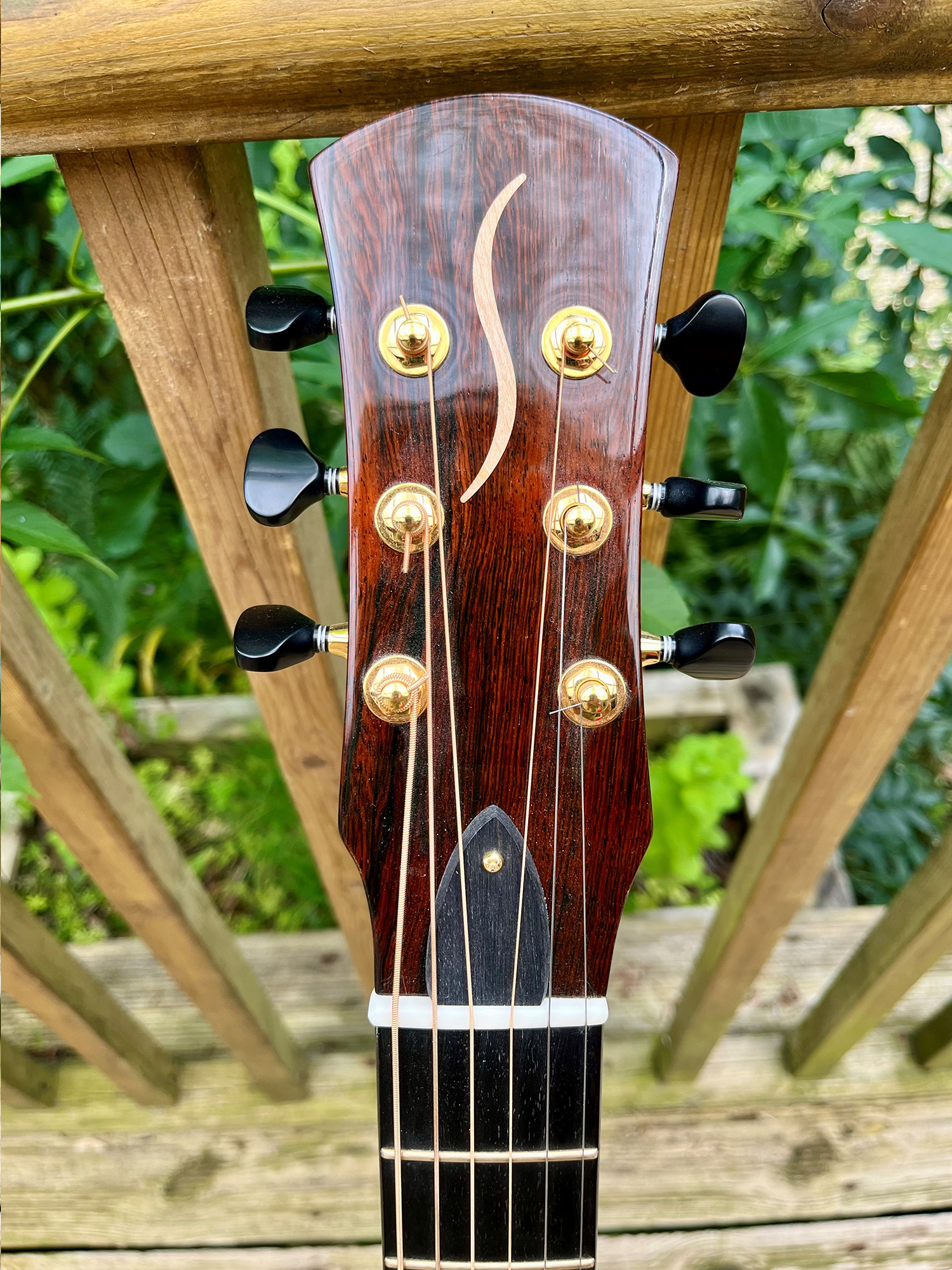
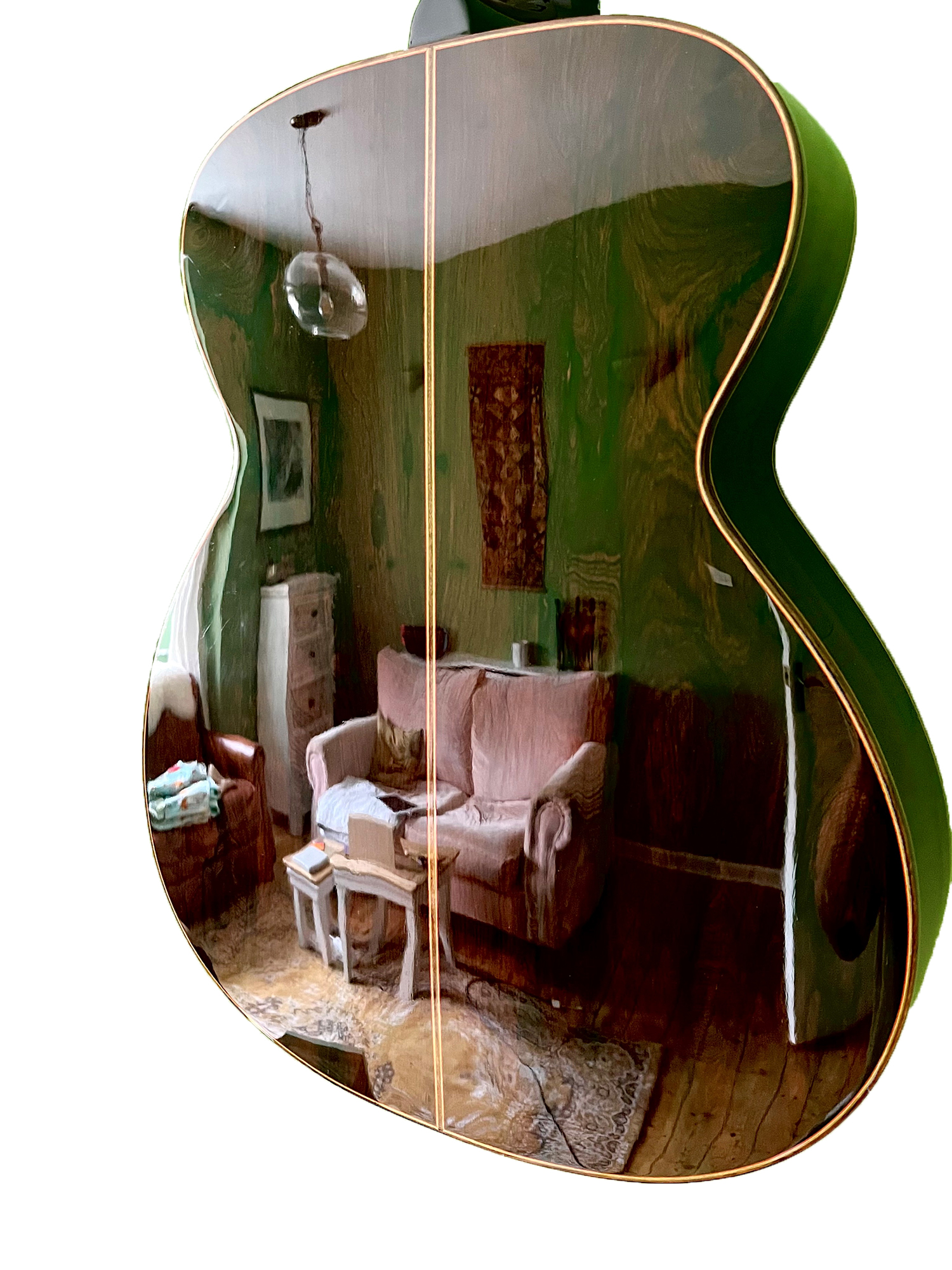
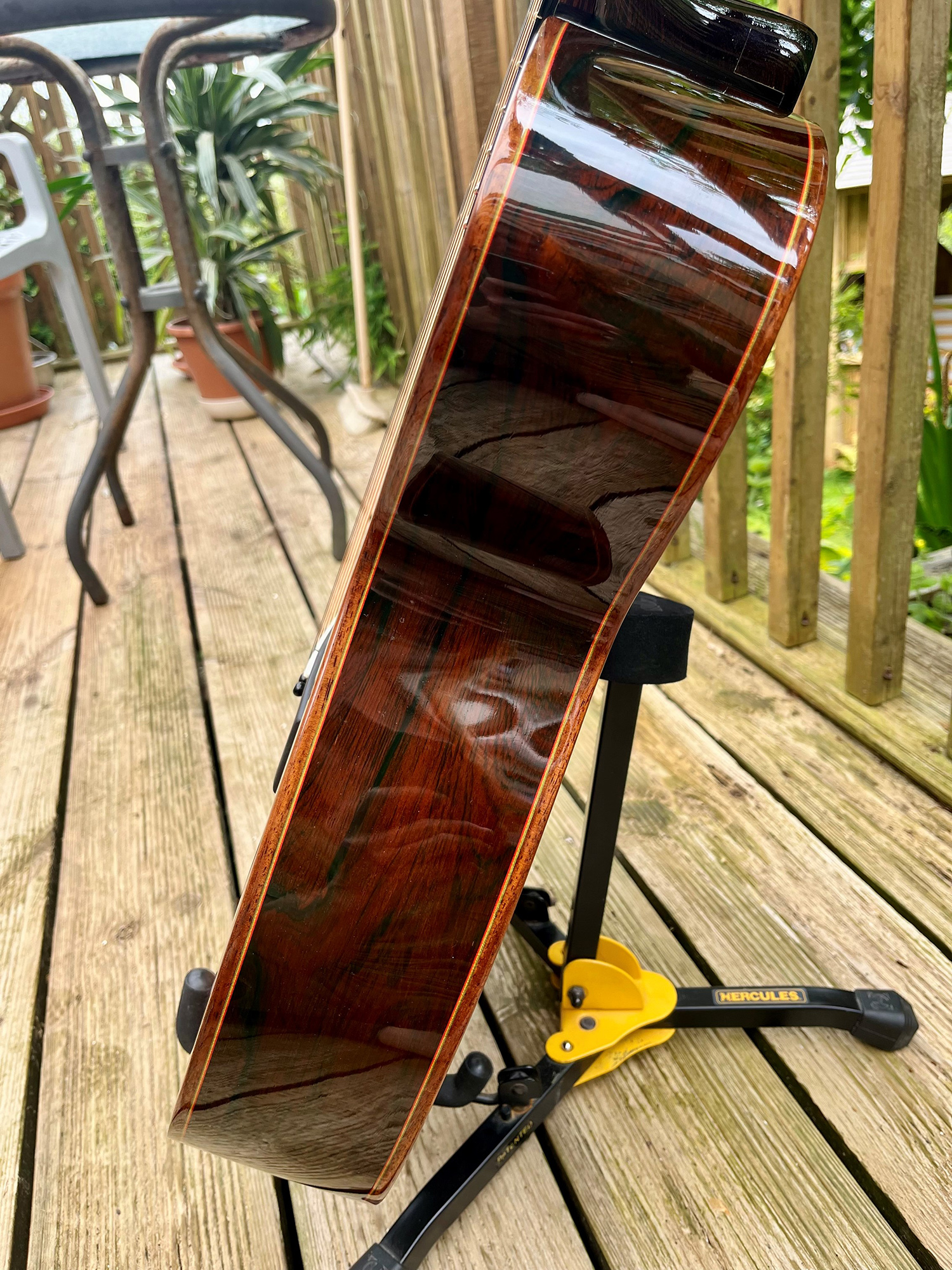
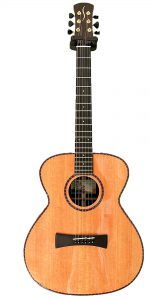
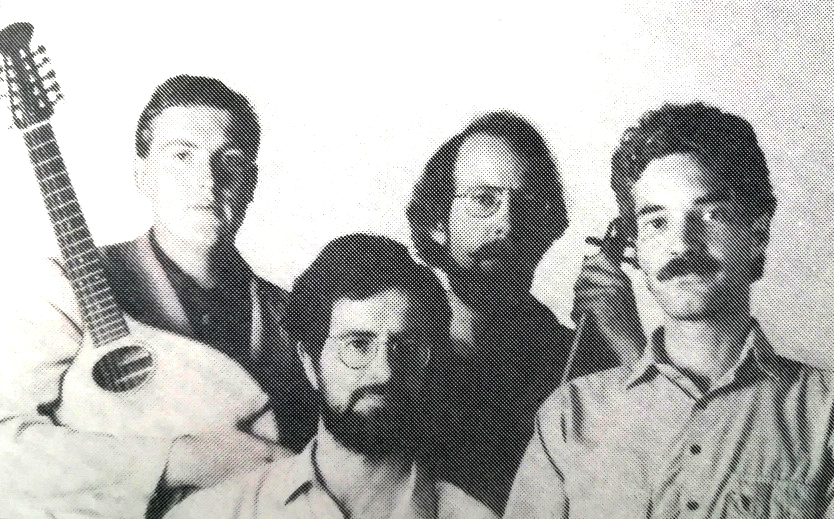
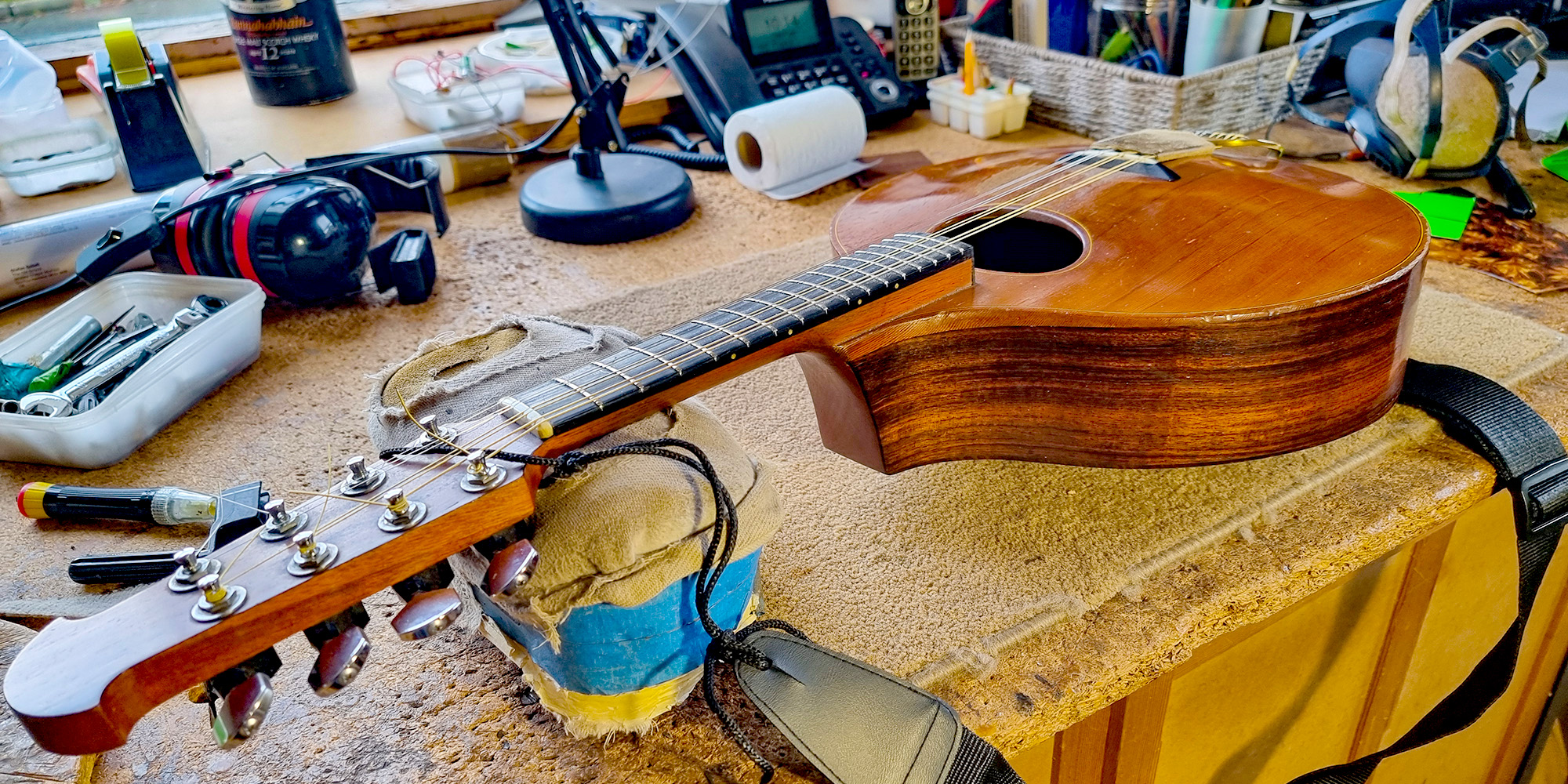
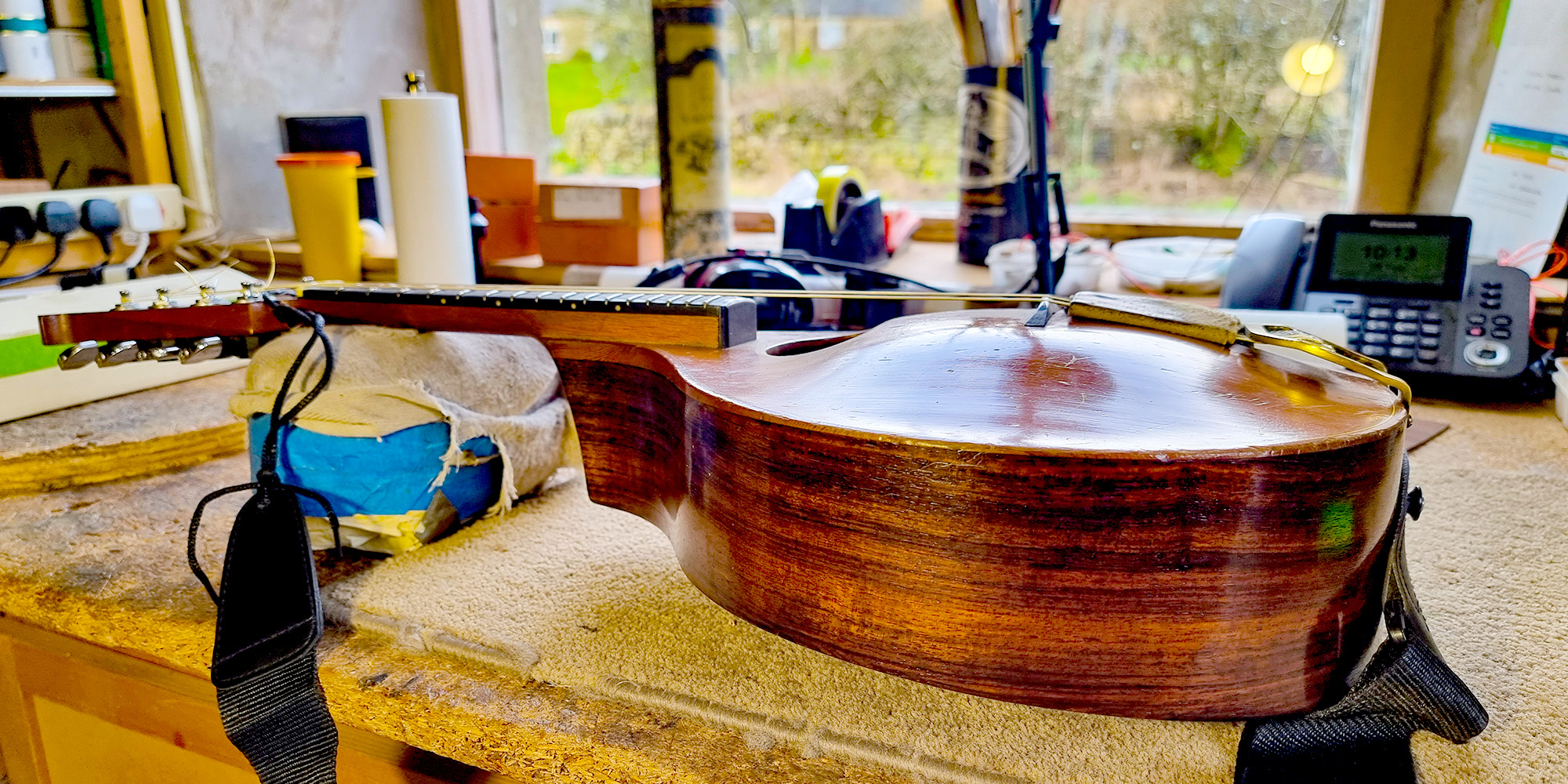
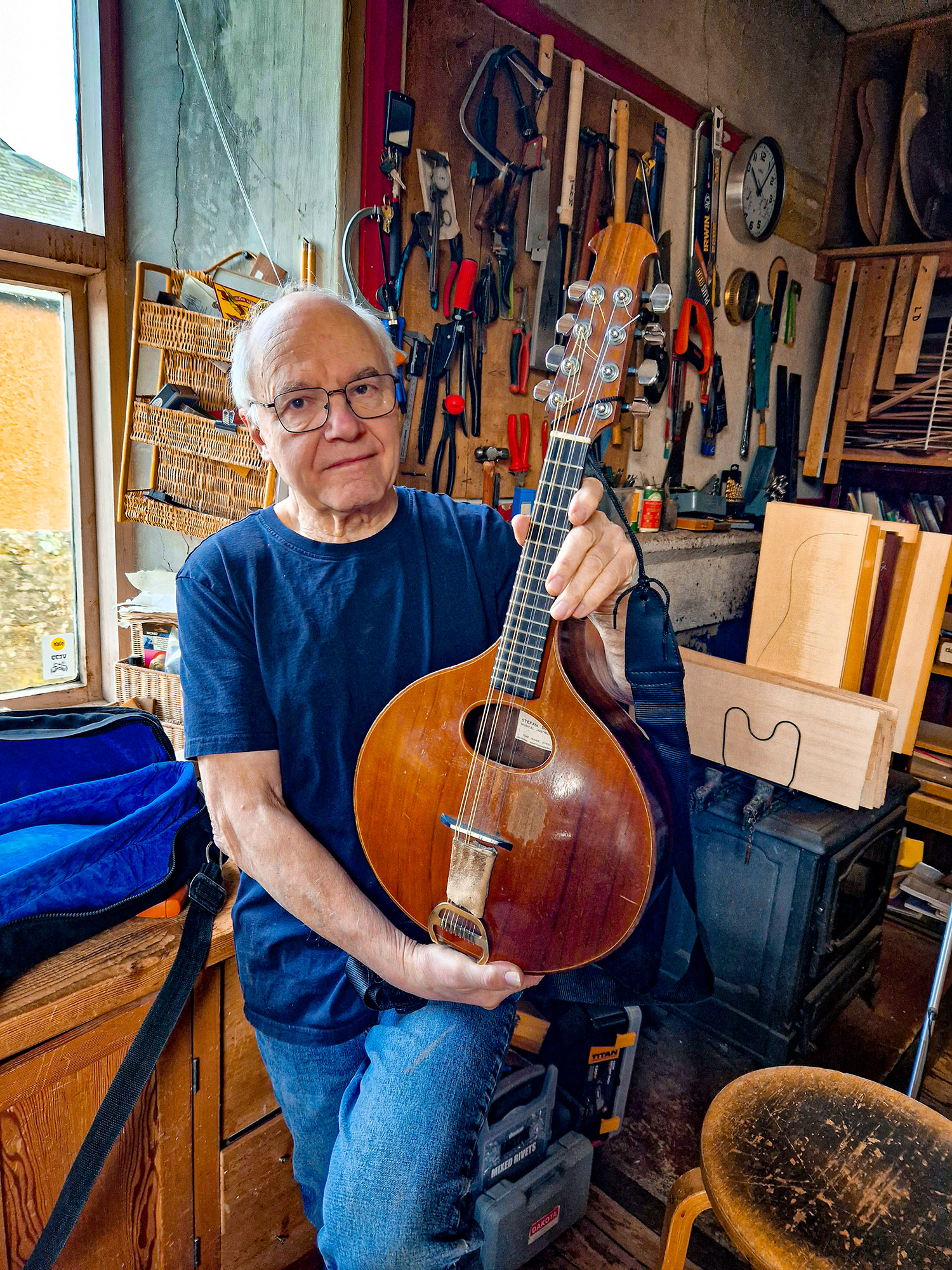 With the mandolin I built nearly 50 years ago
With the mandolin I built nearly 50 years ago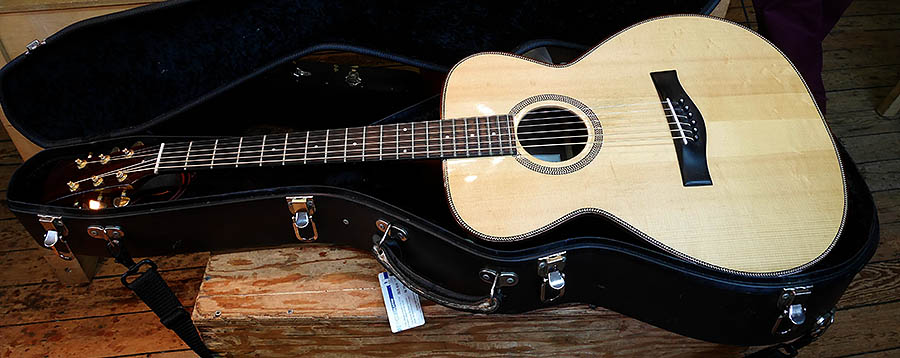
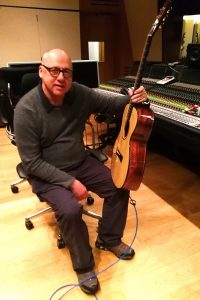
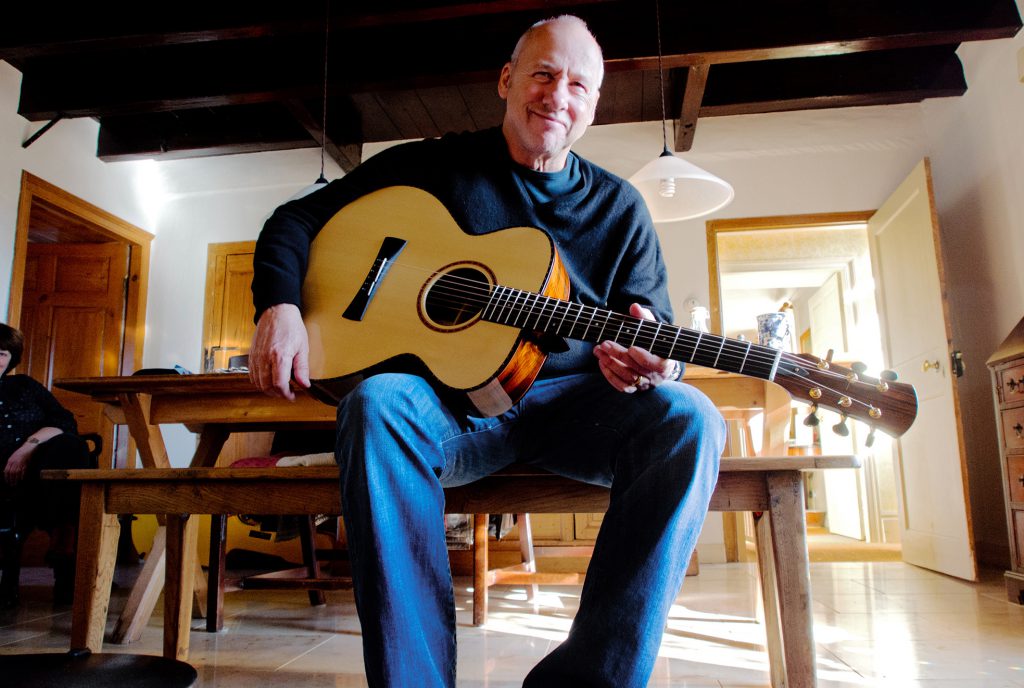
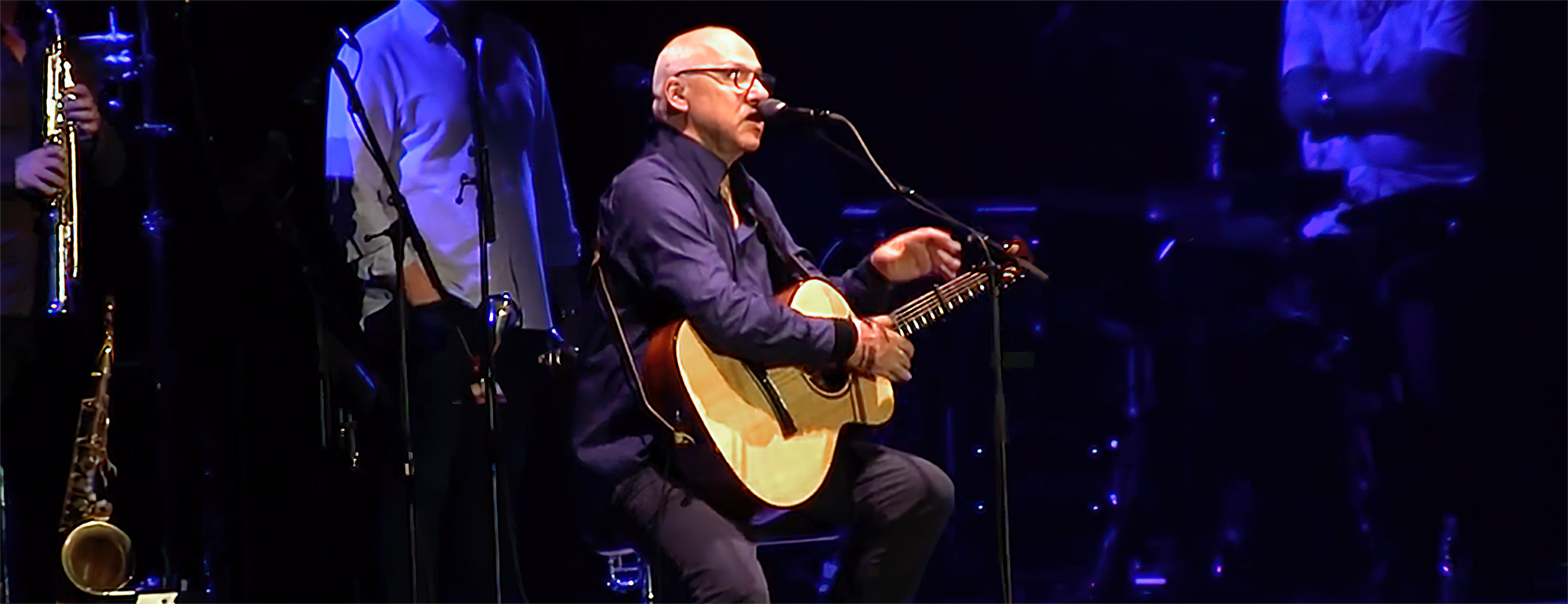
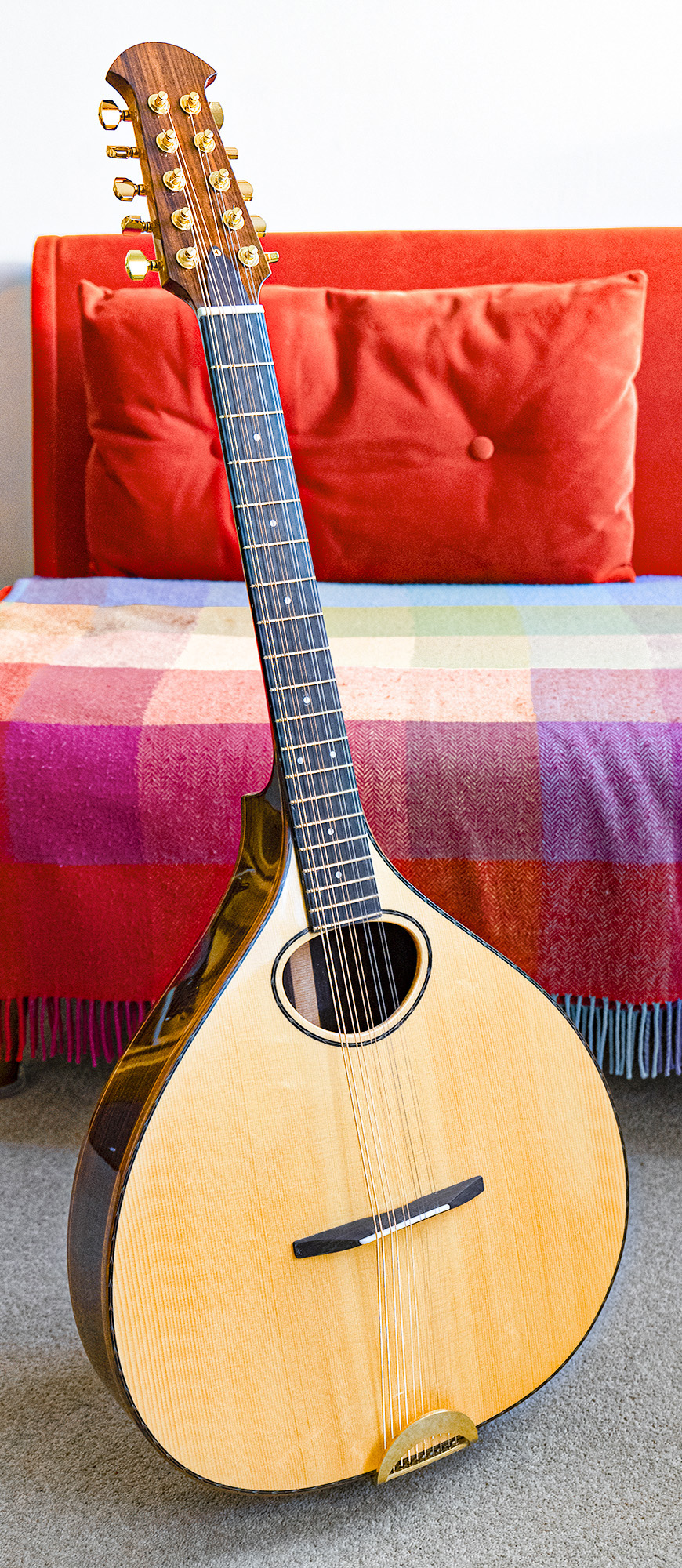
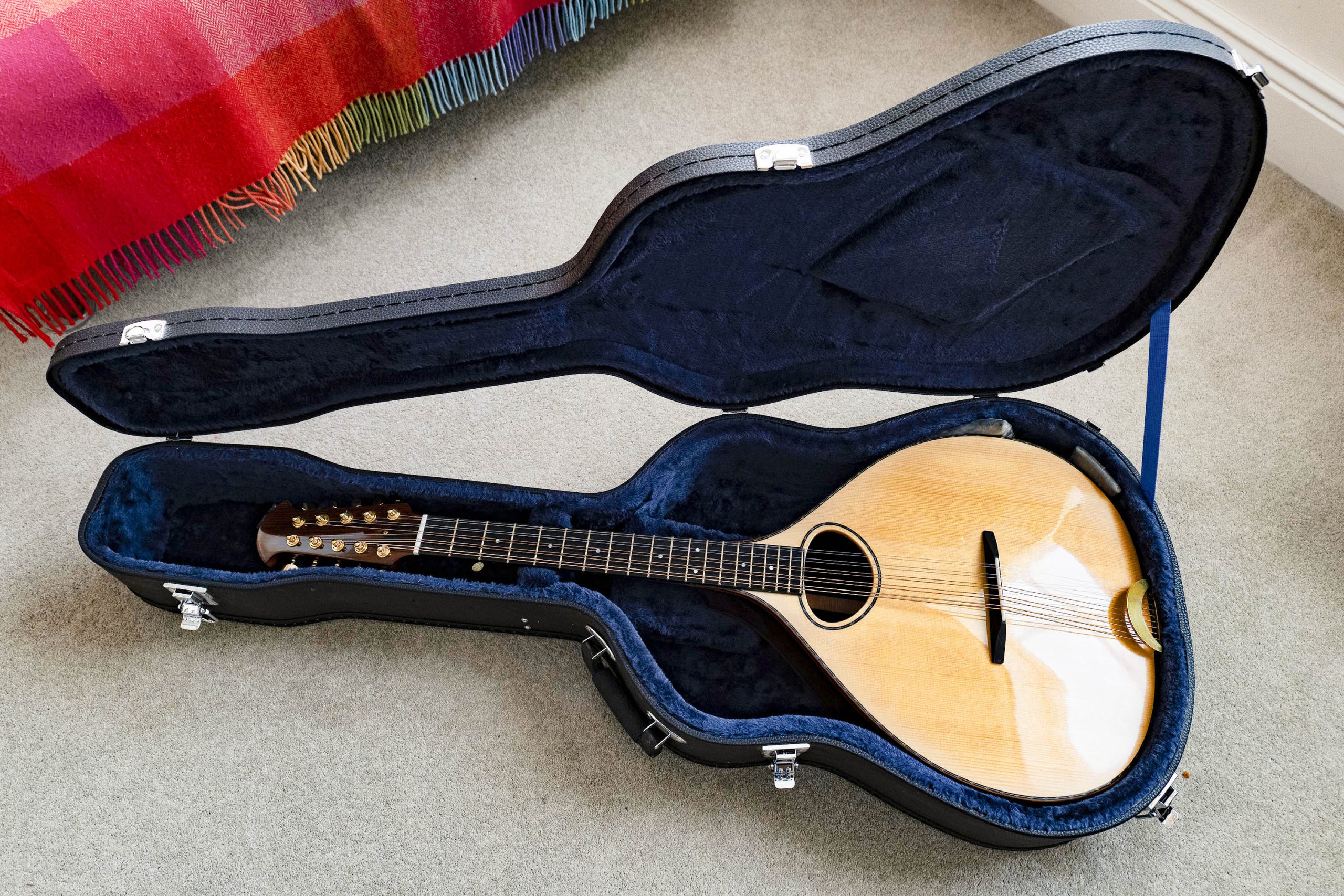
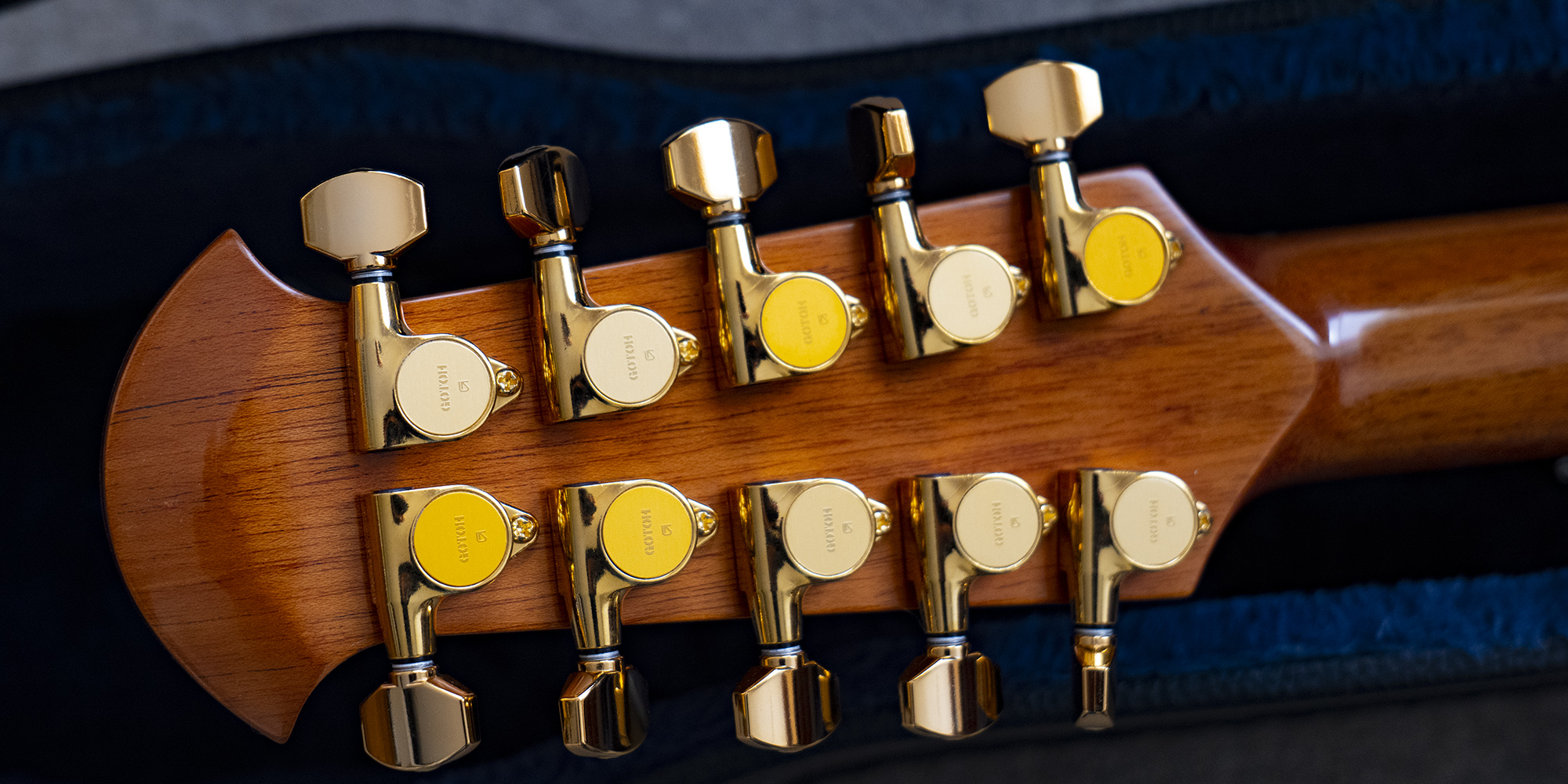
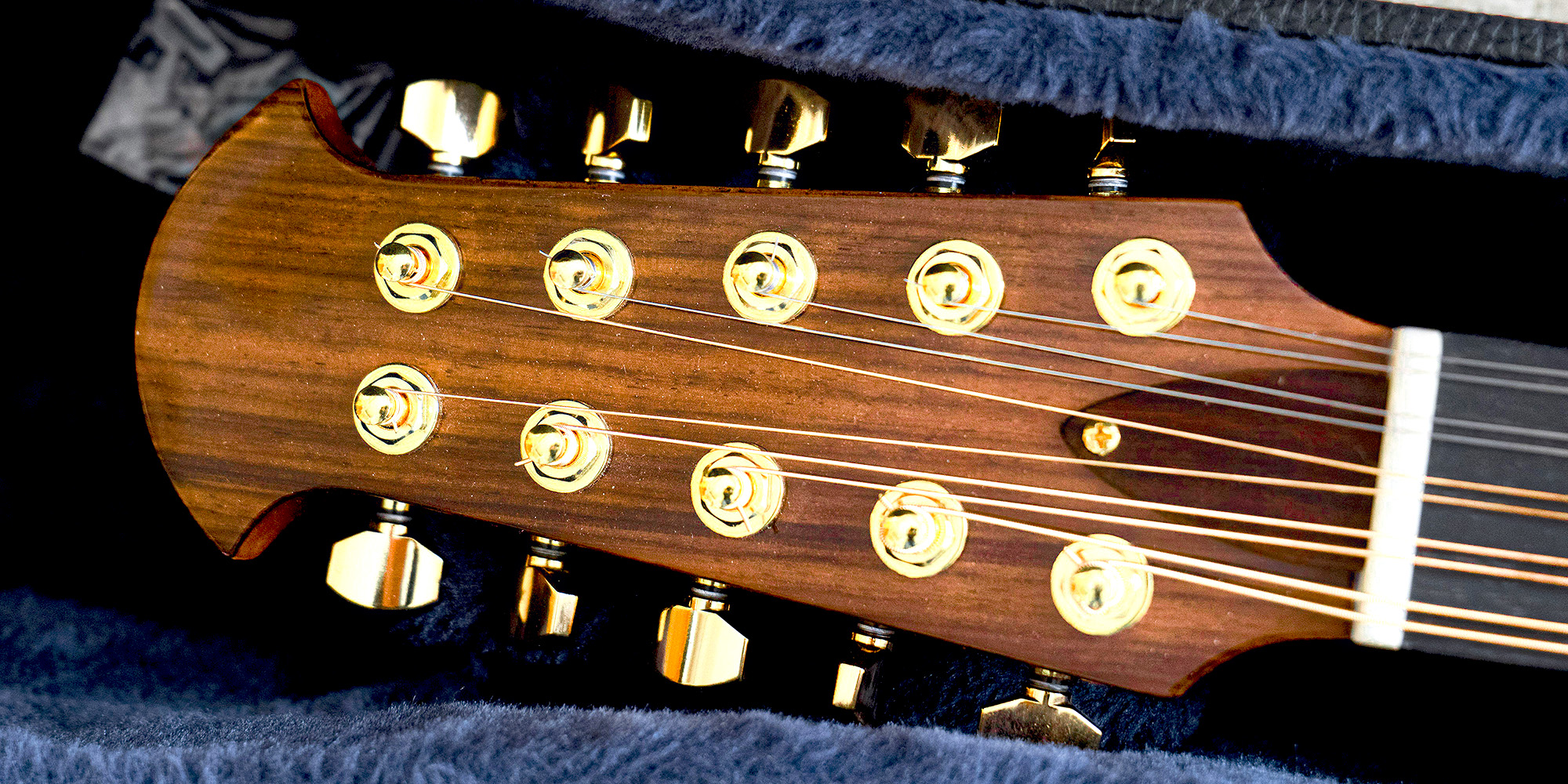
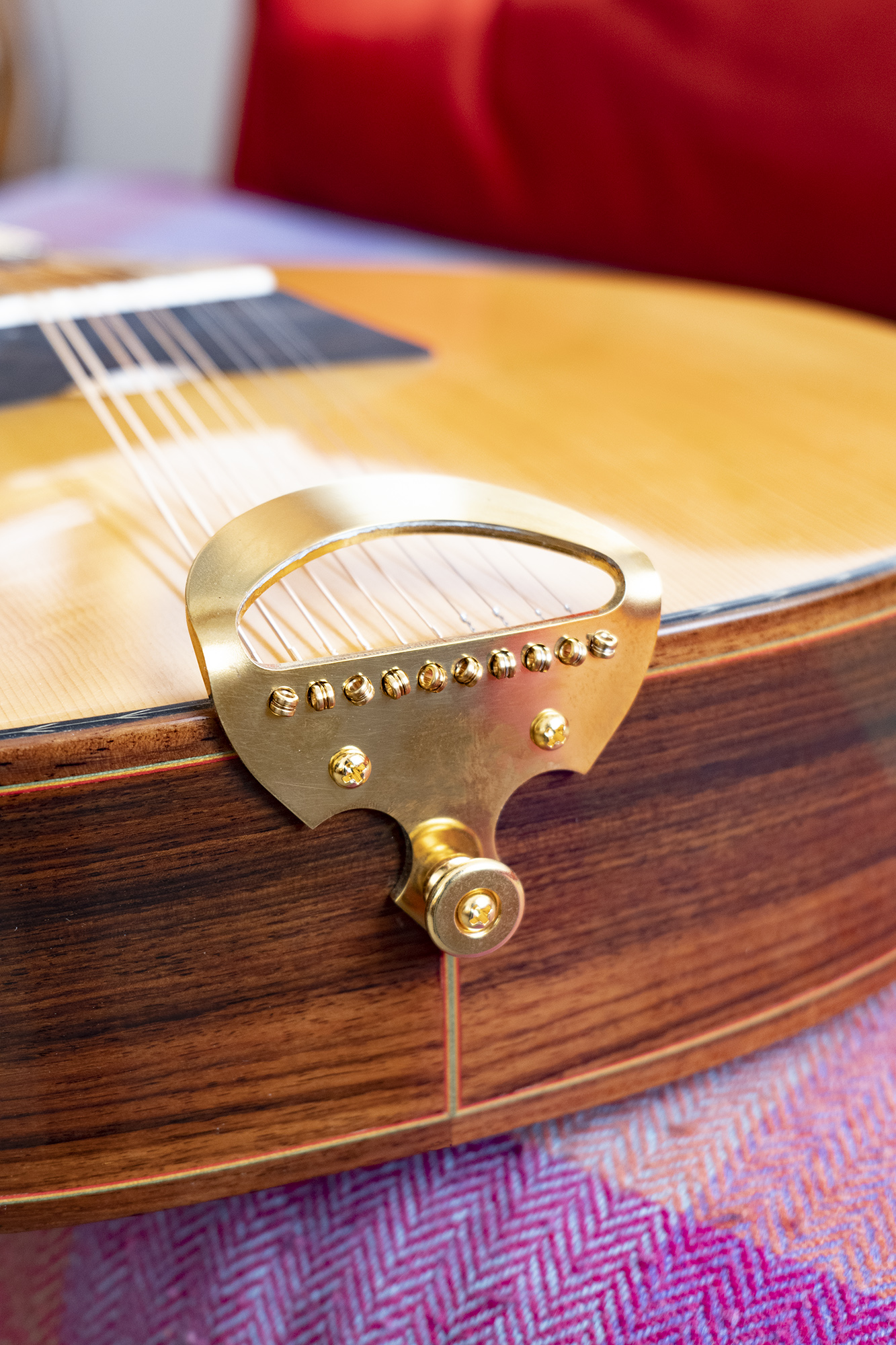
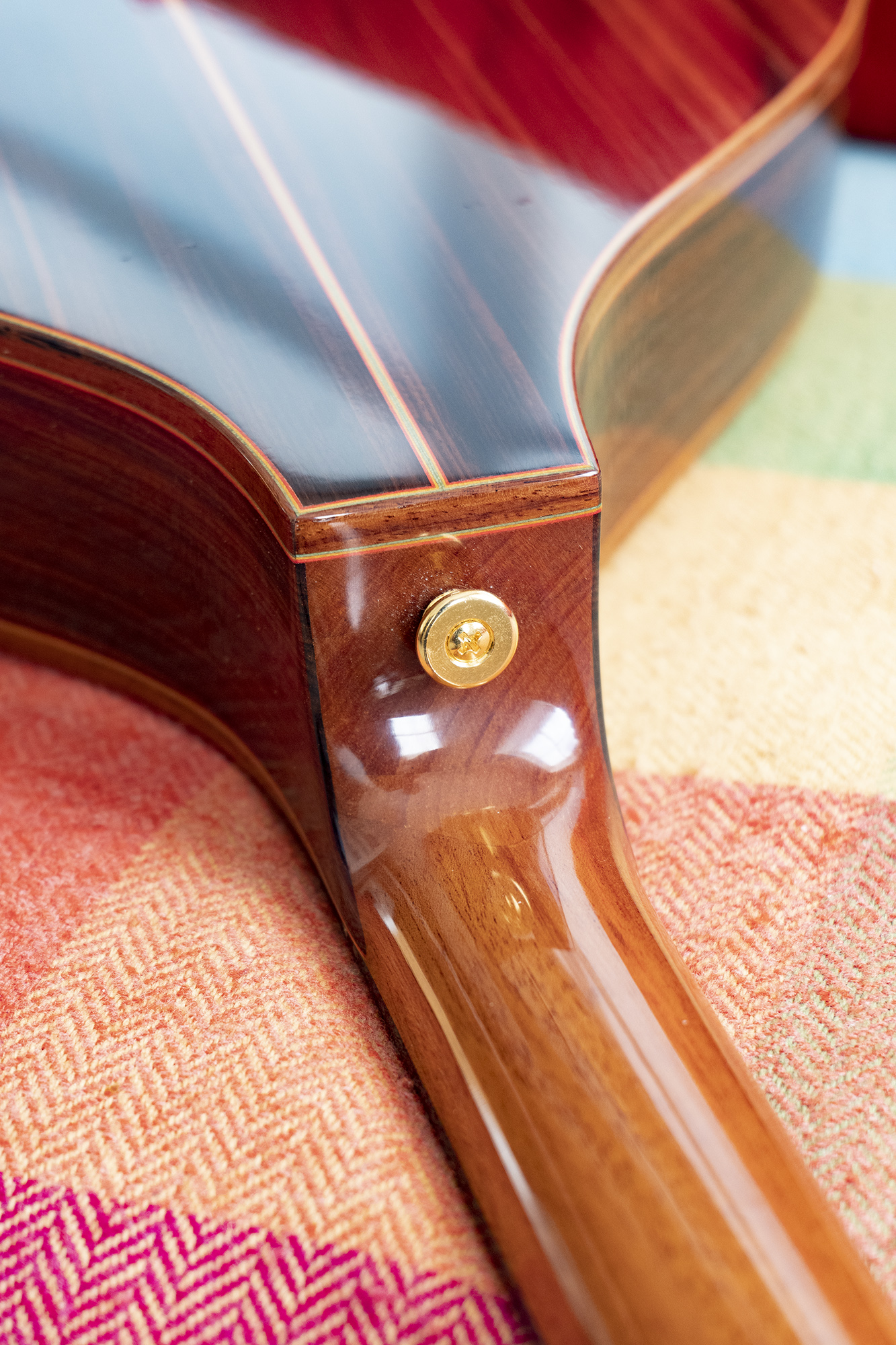
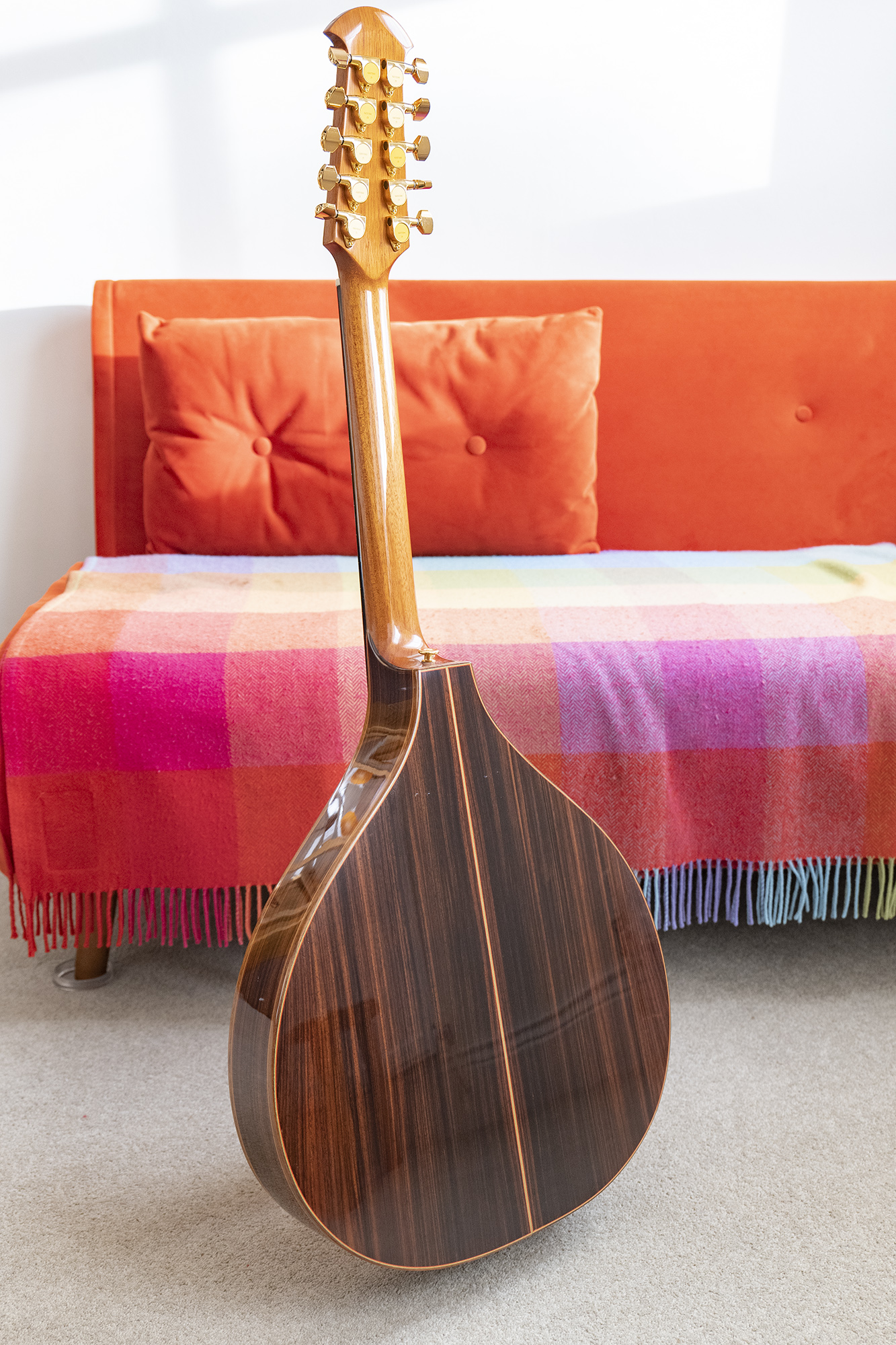
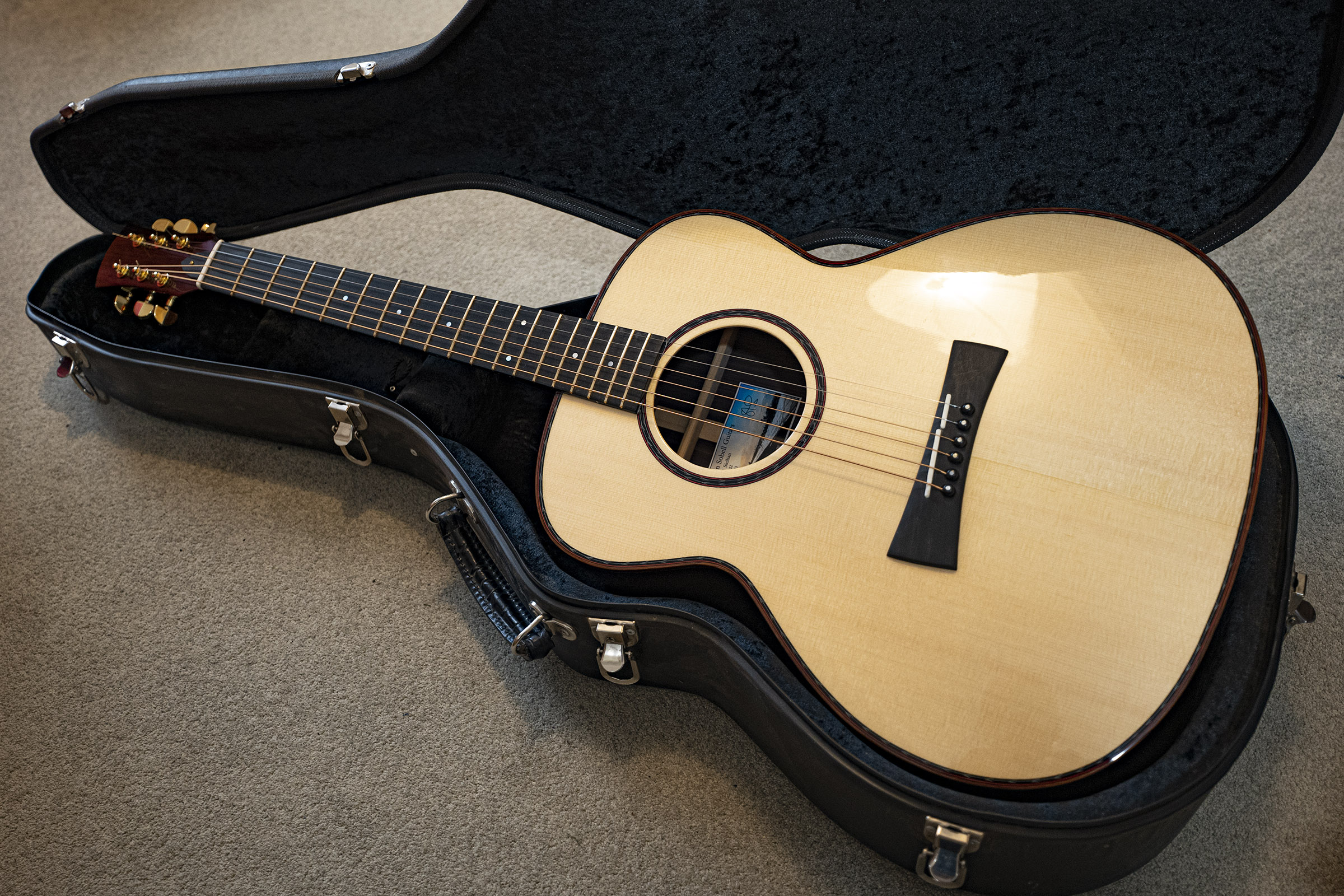 Click for full size image
Click for full size image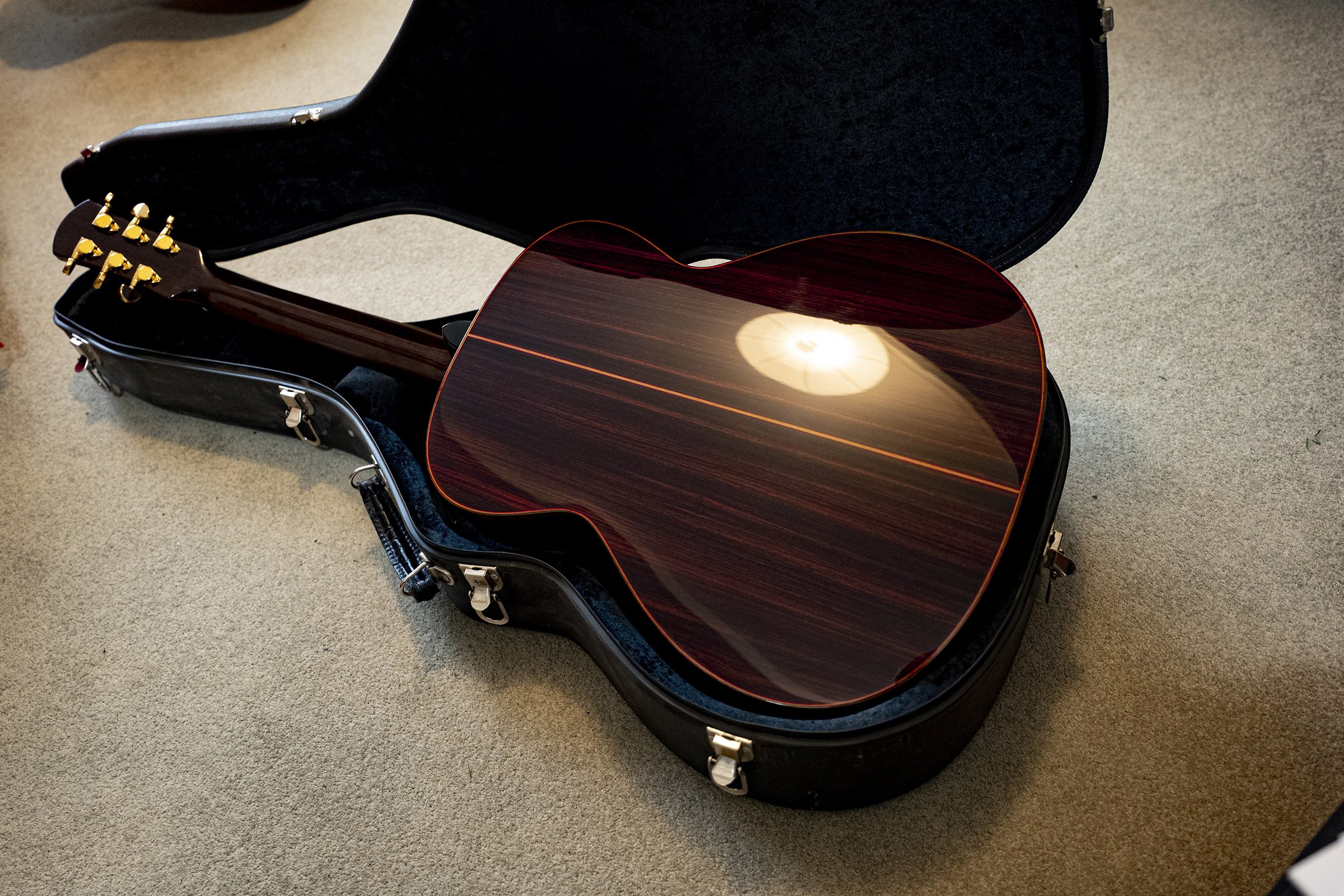 Click for full size image
Click for full size image